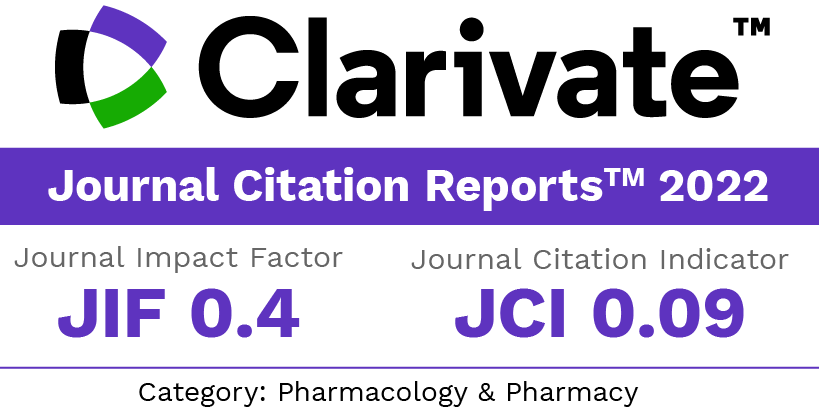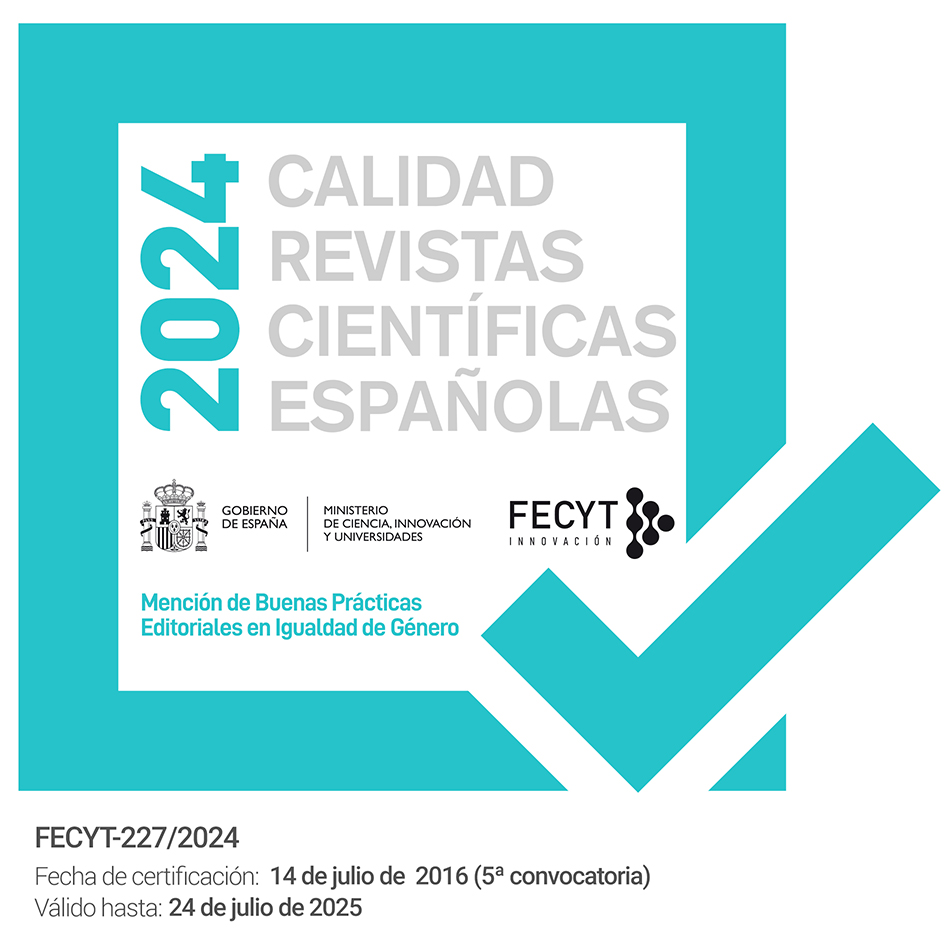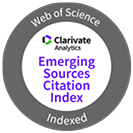Desarrollo y validación de un método RP-HPLC para la cuantificación de sparfloxacino en formas de dosificación farmacéuticas.
Palabras clave:
Sparfloxacino, HPLC, desarrollo de métodos, validaciónResumen
Un método rápido y sensible de cromatografía líquida en fase reversa de alta resolución ha sido desarrollado para el análisis cuantitativo de sparfloxacino en preparaciones farmacéuticas. El método fue validado de acuerdo a las normas de precisión, especificidad y linealidad aportadas por la FDA, ICH y USP. El método fue desarrollado utilizando la fase móvil compuesta por solución acuosa de ácido acético al 1% y acetonitrilo en la proporción 71:29% (v/v) bajo una velocidad de flujo de 0.7 ml/min sobre una columna de sílice c-8 a temperatura ambiente. La recuperación fue de más del 97% para cada muestra adicionada de sparfloxacino lo que demuestra la precisión del protocolo. La precisión intradía e interdía fue inferior al límite máximo permitido (RSD≤ 2.0), de acuerdo a la FDA. El método mostró una respuesta linear con un coeficiente de correlación del 0.998. Por lo tanto, el método fue preciso, reproducible, sensible y rápido, por lo que puede ser utilizado para el análisis de formulaciones de sparfloxacino.Descargas
Citas
Ito T, Otsuki M, Nishino T. In vitro antibacterial activity of Q-35, a new fluoroquinolone. Antimicrob Agents Chemother. 1992; 35:1708-1714.
Thomson KS, Sanders CC, Hayden ME. In vitro studies with five quinolones: evidence-for changes in relative potency as quinolone resistance rises. Antimicrob Agents Chemother. 1991; 35:2329-2334.
Chin NX, Gu JW, Yu KW, Zhang YX, Neu HC. In vitro activity of sparfloxacin. Antimicrob Agents Chemother. 1991; 35:567-557.
Rastogi N, Labrousse V, Goh KS, Carvalho DSJP. Antimycobacterial spectrum of sparfloxacin and its activities alone and in association with other drugs against mycobacterium avium complex growing extracellularly and intracellularly in murine and human macrophages. Antimicrob Agents Chemother. 1991; 35:2473-2480.
Sultan MZ, Lee KM, Moon SS. Antibacterial effect of naturally occurring unsaturated fatty acids from Prunus japonica against Propionibacterium acnes. Orient Pharm Exp Med. 2009; 9: 90-96.
Kahsay G, Egziabher AG. Quality assessment of the commonly prescribed antimicrobial drug, ciprofloxacin tablets, marketed in Tigray, Ethiopia. Momona Ethiopian J Sci. 2010; 2:93-107.
Rahman NN, Ahmad S. Development of quantitative analysis of sparfloxacin by high performance liquid chromatography. Dhaka Univ J Pharm Sci.2007; 6:21-23.
Gupta H, Aqil M, Khar RK, Ali A, Sharma A, Chander P. Development and validation of a stability-indicating RP-UPLC method for the quantitative analysis of sparfloxacin. J Chromatogr Sci. 2010; 48:1-6.
Sreekanth N, Awen BZ, Rao CB, Raju NJ. A new spectrophotometric method development and validation of sparfloxacin in bulk and pharmaceutical dosage forms by sodium dichromate chromogen. Int J Pharmacy Technology. 2010; 2: 465-471.
Sreekanth N, Awen BZ, Rao CB. A new colorimetric determination and validation of sparfloxacin based on ferric nitrate chromogen. Res J Pharm Biol Chem Sci. 2010; 1: 9-13.
Sharma MC, Sharma S. UV-densitometric determination of sparfloxacin and its application to the assay in pharmaceutical dosage forms. J Optoelectron Biomed Materials. 2010; 2:191-195.
Kamles P, Badmanaban R, Patel CN. Development and validation of spectrophotometric methods for the estimation of sparfloxacin in tablet dosage forms. J Chem Pharm Res. 2010; 2:528-532.
United States Pharmacopoeia 30 - National Formulary 25 (USP 30 - NF 25), United States Pharmacopeial Convention, Rockville, MD, 2007.
International Conference on Harmonization: ICH Harmonized Tripartite Guideline- Validation of Analytical Procedures: Text and Methodology Q2 (R1): 2005.
USA Food and Drug Administration, Methods, method verification and validation; Document No.: ORA-Lab. 5.4.5, version No.: 1.5 (2009).
British Pharmacopoeia (BP)-2009, The Stationary Office, London, 2002.
Descargas
Publicado
Cómo citar
Número
Sección
Licencia
Los artículos que se publican en esta revista están sujetos a los siguientes términos en relación a los derechos patrimoniales o de explotación:
- Los autores/as conservarán sus derechos de autor y garantizarán a la revista el derecho de primera publicación de su obra, la cual se distribuirá con una licencia Creative Commons BY-NC-SA 4.0 que permite a terceros reutilizar la obra siempre que se indique su autor, se cite la fuente original y no se haga un uso comercial de la misma.
- Los autores/as podrán adoptar otros acuerdos de licencia no exclusiva de distribución de la versión de la obra publicada (p. ej.: depositarla en un archivo telemático institucional o publicarla en un volumen monográfico) siempre que se indique la fuente original de su publicación.
- Se permite y recomienda a los autores/as difundir su obra a través de Internet (p. ej.: en repositorios institucionales o en su página web) antes y durante el proceso de envío, lo cual puede producir intercambios interesantes y aumentar las citas de la obra publicada. (Véase El efecto del acceso abierto).



















